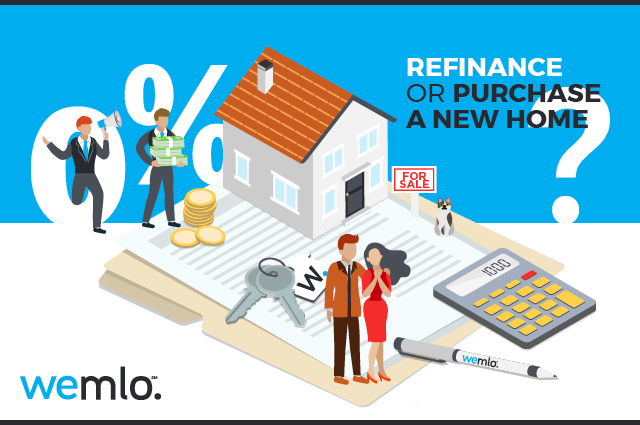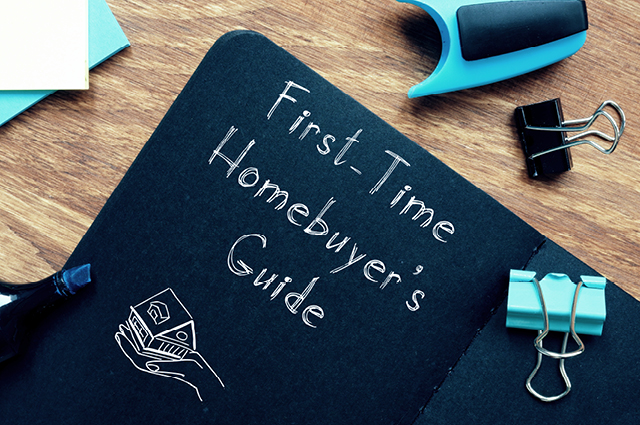Discover how the latest technology revolution could change the mortgage industry.
Towards the end of 2020, mortgage rates hit historic lows thanks in part to the COVID-19 pandemic. As a result, millions of homeowners realized they could refinance — or afford a new home — and mortgage applications rapidly rose. By December, rates had dropped down to 2.67% for a 30-year fixed-rate — more than a full percentage point lower than the 3.7% average we started the year with. In 2021, mortgage rates have started to creep back up, but remain competitive. As of the writing of this post, a 30-year fixed rate was at 3.256%. As a mortgage loan originator (MLO), you may have borrowers asking for your advice on whether they should refinance or buy a new home, so we put together this quick guide to help you explain the potential key considerations for both options.
Refinancing
Everyone has their own reasonings and individual situations to take into consideration, so you’ll want to talk to the homeowner about their financial goals. Finding out why they want to refinance can help you determine the best options for them. Do they want to lower their payments? Consolidate debt? Own their home faster? Use the equity for a home project? Many homeowners want to refinance their current mortgage for one of the following reasons:
-
Take advantage of low mortgage rates
-
Pay off credit card debt, home renovations, or other major expenses
-
Move from an adjustable-rate mortgage (ARM) to a fixed-rate mortgage
-
Get rid of potentially costly private mortgage insurance (PMI), if the homeowner has at least 20% equity
While it can be tempting to refinance for the reasons above, there are a few important questions to ask:
-
Do they have at least 20% equity in their home or can they make up the difference in cash? If not, they’ll likely be required to get PMI, which typically costs between 0.5-1% of the loan amount, per year.
-
What is their credit score? Do they qualify for a better rate?
-
Are they planning to stay in the current home long enough to potentially recoup the new closing costs or break even?
-
Are they planning to stay in their home for a few more years? It might make more sense for them to stay with their current ARM loan when rates are low and then refinance to a fixed-rate mortgage or purchase a new home when interest rates start to really climb.
-
Is this a second mortgage? It’s still possible to refinance but could make the process a bit more complicated.
On top of that, as of December 1, 2020, the Federal Housing Finance Agency (FHFA) has implemented a 0.5% fee called the “Adverse Market Refinance Fee.” It affects all Fannie Mae and Freddie Mac refinance loans and is charged directly to lenders. That means the lender can decide to pass it on to the borrower as part of the interest rate or a one-time fee as part of the closing costs. Another option is for the lender to absorb the cost themselves. This fee may slightly increase the overall cost of a refinance for the borrower. There are a few exemptions from this new fee:
-
A principal balance of less than $125,000
-
VA and FHA loan refinances
-
Those purchasing a new home
Purchasing a New Home
On the other hand, purchasing a new home may be the better option for some homeowners. Besides also looking to take advantage of low mortgage rates, this might be a good idea for those with lifestyle changes. Whether it’s a growing family, empty nesters, or they want to accommodate a new work situation (hello working from home!), it might be time for an extra room, bigger yard, or even a smaller living space.
If your customer is considering buying a new home, they may even have enough equity in their current home for a down payment, making the deal even sweeter. That being said, home prices were up 14.1% nationwide in January 2021 as compared to January 2020 and sales increased by 23.7% since last year. Low supply plus low mortgage rates are behind the increase, which could make finding a new home more difficult depending on your borrowers’ budget and desired location.
As an MLO, you can ask your borrower these questions and talk them through their options, but ultimately, the decision is up to them and will depend on multiple factors that are unique to their situation(s). Sometimes the best option is staying in their current home/loan and while you’ll miss out on the opportunity this time, you’ll gain their trust and they’ll be more likely to come back to you when they are ready to buy or refinance.



